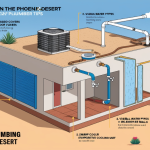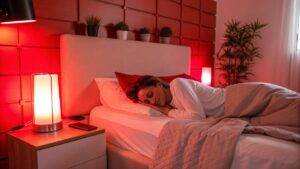Sleep apnea is a prevalent sleep disorder characterized by repeated interruptions in breathing during sleep. These interruptions, or apneas, can last for a few seconds to minutes and may occur numerous times throughout the night. Sleep apnea is primarily categorized into three types:
- Obstructive Sleep Apnea (OSA): The most common form, caused by a blockage of the upper airway due to the relaxation of throat muscles.
- Central Sleep Apnea: Occurs when the brain fails to send the proper signals to the muscles that control breathing.
- Complex Sleep Apnea Syndrome (Mixed Apnea): A combination of obstructive and central sleep apneas.
Importance of Awareness
Raising awareness about sleep apnea is essential because early detection and treatment can dramatically enhance an individual’s quality of life and help prevent serious health issues such as cardiovascular disease, high blood pressure, and diabetes.
By understanding the signs and symptoms of sleep apnea, individuals can seek appropriate medical evaluation and intervention, leading to better management of the disorder and improved overall health.
Understanding Sleep Apnea
Types of Sleep Apnea
Obstructive Sleep Apnea (OSA):
OSA is the most frequent form of sleep apnea, occurring when the muscles at the back of the throat relax excessively. These muscles are essential in supporting structures like the soft palate, uvula, tonsils, and throat sidewalls. When they relax, the airway becomes narrower or even closes, causing interruptions in breathing.
This obstruction often results in the characteristic symptoms of loud snoring, as well as choking or gasping sounds during sleep. These frequent disruptions force brief awakenings that can severely fragment sleep, although the person often doesn’t recall these interruptions.
Central Sleep Apnea (CSA):
CSA is distinct from OSA as it does not involve a physical blockage of the airway. Instead, it arises when the brain doesn’t send the right signals to the muscles that control breathing. This form of apnea is less common and is often linked to significant health issues such as heart failure or neurological conditions like stroke. With CSA, the typical loud snoring of OSA might be absent, but the impact on sleep quality and overall daytime function can be just as profound.
Complex Sleep Apnea Syndrome (Mixed Apnea):
This condition, also known as treatment-emergent central sleep apnea, is a blend of OSA and CSA events. It often commences as OSA but evolves into a mix where central apneas occur, particularly after treatment initiation with devices like CPAP. Managing complex sleep apnea requires a nuanced approach due to the dual nature of the breathing disruptions.
How Sleep Apnea Affects the Body
Sleep apnea significantly disrupts the sleep cycle, leading to fragmented and non-restorative rest. This disruption can manifest in several key ways:
Excessive Daytime Sleepiness and Fatigue:
Individuals with sleep apnea often experience unrelenting tiredness and may struggle to stay alert or concentrate during the day, despite spending an adequate amount of time in bed. This is because the repeated sleep interruptions prevent them from reaching the deeper, more restorative stages of sleep.
Long-Term Health Effects:
The ongoing breathing interruptions and resultant lack of oxygen can have serious long-term health consequences, including:
- Cardiovascular Diseases: The stress of disrupted sleep and frequent drops in oxygen levels can strain the heart, increasing the risk for high blood pressure, heart attacks, strokes, and arrhythmias.
- Memory and Cognitive Problems: Chronic sleep deprivation associated with sleep apnea can impair memory, slow cognitive processing, and affect decision-making abilities. Over extended periods, this can contribute to substantial cognitive decline.
- Mood Disturbances: The lack of restful sleep can lead to mood swings, irritability, and a higher risk for depression and anxiety. These mental health challenges can affect personal relationships and overall quality of life.
Understanding the profound effects of sleep apnea on both sleep quality and overall health underscores the importance of early diagnosis and effective treatment, not only to improve sleep but also to mitigate associated health risks.
Signs and Symptoms of Sleep Apnea
Common Symptoms
Loud and Chronic Snoring:
One of the hallmark signs of sleep apnea is loud and persistent snoring, often reported by a sleep partner. This snoring arises because of the obstruction in the airway, which forces the air to pass through a narrowed passage, causing the tissues to vibrate. While snoring itself can be a social nuisance, in the context of sleep apnea, it indicates a significant disruption in normal breathing patterns.
Gasping or Choking During Sleep:
People with sleep apnea may experience episodes where they gasp or choke, abruptly waking them up. These occurrences are the body’s reflexive response to reopen the airway after a breathing pause. Such events lead to fragmented sleep, as the sleeper frequently transitions out of deeper sleep stages to a lighter, more wakeful state. This can leave individuals feeling restless and exhausted despite spending adequate time in bed.
Excessive Daytime Sleepiness:
The frequent interruptions in sleep prevent individuals from reaching the restorative stages of the sleep cycle, resulting in excessive daytime sleepiness. This symptom is more than just feeling drowsy; it can significantly impact daily life, making it difficult to stay awake during meetings, while driving, or even through casual conversations. It can affect work performance, leading to decreased productivity and increased risk of accidents.
Difficulty Concentrating or Remembering Details:
Sleep apnea can lead to cognitive impairments, largely due to sleep fragmentation and lack of oxygen to the brain. Individuals might find it hard to focus on tasks, make decisions, or remember information. This cognitive fog can interfere with daily activities, affecting everything from job performance to personal relationships. Over time, these cognitive challenges can become more pronounced, contributing to an overall decline in mental sharpness.
These symptoms not only disrupt restful sleep but also have a profound impact on daily functioning and overall quality of life. Recognizing and addressing these signs early can lead to effective treatment, improving both sleep quality and overall health.
Less Obvious Symptoms of Sleep Apnea
Morning Headaches
Waking up with a headache can be a lesser-known symptom of sleep apnea. These headaches are often due to decreased oxygen levels during sleep, as the frequent pauses in breathing lead to a drop in blood oxygen saturation. The lack of oxygen can cause blood vessels in the brain to widen, resulting in a dull, throbbing headache. While morning headaches typically dissipate after a few hours, they can significantly affect one’s mood and productivity at the start of the day.
Mood Swings or Irritability
Sleep apnea can lead to mood disturbances that may not be immediately linked to sleep issues. The chronic sleep deprivation and interrupted sleep cycles associated with this condition can cause irritability, anxiety, and mood swings, impacting personal and professional relationships. These emotional fluctuations can make it challenging to maintain composure in stressful situations, leading to increased conflict and stress in daily interactions.
Waking Up with a Dry Mouth or Sore Throat
Another subtle symptom of sleep apnea is waking up with a dry mouth or sore throat. This occurs because individuals with sleep apnea often breathe through their mouth instead of their nose during sleep to compensate for blocked airways. This mouth breathing can dry out the mucous membranes, leading to discomfort upon waking. While seemingly minor, this symptom can hint at underlying breathing difficulties during sleep.
Frequent Need to Urinate During the Night
Nocturia, or the frequent need to urinate during the night, is another less obvious symptom linked to sleep apnea. The fragmented sleep caused by apnea episodes can stimulate the need to urinate. Moreover, the body releases a hormone called atrial natriuretic peptide in response to breathing disturbances, which increases urine production. This symptom can further disrupt sleep, contributing to the cycle of fatigue and daytime sleepiness.
Understanding these less obvious symptoms can provide a fuller picture of how sleep apnea affects daily life, emphasizing the need for early recognition and treatment to improve overall health and well-being.
Risk Factors
Demographic Factors
1. Age:
Sleep apnea becomes more common as people grow older, particularly over the age of 40. This is primarily due to a decrease in muscle tone in the throat, making airway collapse during sleep more likely. Nevertheless, sleep apnea is not exclusive to adults; it can also affect children, though typically under different circumstances.
2. Gender:
Men are at a higher risk for developing sleep apnea compared to women, especially before the age of 50. However, post-menopausal women face an increased risk, which is thought to be linked to hormonal changes that affect upper airway stability, thereby narrowing the risk difference between genders.
Health Conditions
1. Obesity:
Being overweight is a major risk factor for obstructive sleep apnea. Fat deposits can accumulate around the neck and upper airway, which can obstruct normal breathing patterns. The likelihood of developing sleep apnea rises with an increased body mass index (BMI), underscoring the importance of weight management for prevention.
2. High Blood Pressure and Diabetes:
There’s a strong association between sleep apnea and chronic conditions like hypertension and diabetes. Sleep apnea can exacerbate high blood pressure due to stress on the cardiovascular system from interrupted breathing. Similarly, individuals with type 2 diabetes are more prone to sleep apnea due to metabolic disturbances that affect breathing patterns.
Lifestyle Factors
- Smoking:
Smoking can lead to irritation and inflammation in the upper airway, increasing the risk of obstructions during sleep. Smokers have a higher incidence of sleep apnea compared to non-smokers, highlighting the impact of smoking on respiratory health. - Alcohol Use:
Alcohol consumption, particularly before bedtime, can relax throat muscles excessively, worsening sleep apnea symptoms. This relaxation can cause airway collapse during sleep, increasing both the frequency and severity of apnea episodes. - Sedentary Lifestyle:
A lifestyle lacking in physical activity can contribute to obesity, one of the primary risk factors for sleep apnea. In addition, sedentary habits can harm cardiovascular health, further elevating the risk of developing the condition. Regular exercise can help mitigate these risks by supporting weight management and improving overall respiratory function.
Understanding these risk factors can aid in the early identification and management of sleep apnea, ultimately improving health outcomes and quality of life.
Diagnosis and Evaluation of Sleep Apnea
When to Seek Medical Advice
If you’re experiencing persistent symptoms like loud snoring that disturbs your partner, excessive daytime sleepiness despite getting a full night’s rest, or episodes of gasping during sleep, these are signs you shouldn’t ignore. These symptoms can be indicative of sleep apnea and warrant a visit to your doctor. Sleep apnea not only affects your quality of sleep but can also have serious health implications if left untreated, including cardiovascular issues and reduced daytime performance.
Diagnostic Methods
1. Sleep Studies (Polysomnography):
Conducted in specialized sleep centers, polysomnography is the most comprehensive diagnostic tool for sleep apnea. During an overnight stay, this test monitors various physiological activities, including heart rate, lung function, brain activity, breathing patterns, arm and leg movements, and blood oxygen levels. The data gathered provides a detailed picture of your sleep patterns and any disruptions, allowing for an accurate diagnosis of sleep apnea and other sleep disorders.
2. Home Sleep Apnea Testing:
For those who may not have access to a sleep center or prefer the comfort of their own home, home sleep apnea testing offers a convenient alternative. This method involves using a simplified device that measures some of the variables monitored in a full sleep study, such as airflow, breathing patterns, and blood oxygen levels.
While it may not provide as much data as polysomnography, it is an effective tool for diagnosing moderate to severe cases of obstructive sleep apnea.
Evaluation by a Sleep Specialist
A thorough evaluation by a sleep specialist is crucial in tailoring a specific treatment plan for sleep apnea. The specialist will review the results from your sleep study or home test and consider your medical history, lifestyle, and the severity of your symptoms. This personalized approach ensures that the treatment plan addresses your specific needs, which might include lifestyle changes, the use of continuous positive airway pressure (CPAP) devices, or other interventions.
Working closely with a specialist can significantly improve sleep quality and overall health outcomes.
Understanding when to seek medical advice and the available diagnostic methods can empower you to take the necessary steps toward better sleep health. Early diagnosis and intervention are key to managing sleep apnea effectively and enhancing your quality of life.
Treatment Options for Sleep Apnea
Lifestyle Changes
1. Maintaining a Healthy Weight:
Weight management is crucial in reducing the severity of sleep apnea. Excess weight, particularly around the neck, can contribute to airway obstruction during sleep. By losing weight, you can decrease fatty deposits in your throat, potentially reducing or even eliminating sleep apnea symptoms. Regular exercise and a balanced diet are key components in achieving and maintaining a healthy weight.
2. Positional Therapy:
Positional therapy involves adjusting your sleeping position to prevent airway blockages. Many people experience worse symptoms of sleep apnea when sleeping on their back since gravity can cause the tongue and soft tissues to fall back and obstruct the airway. By sleeping on your side, you can alleviate this obstruction, leading to better airflow and reduced apnea episodes. Special pillows or devices can help maintain this position throughout the night.
3. Avoiding Alcohol and Sedatives:
Alcohol and sedatives relax the muscles in the throat, which can exacerbate sleep apnea symptoms by increasing the likelihood of airway collapse. By avoiding these substances, particularly in the hours leading up to bedtime, you can help maintain muscle tone in the throat and reduce breathing interruptions during sleep.
Medical Treatments
1. Continuous Positive Airway Pressure (CPAP) Therapy:
CPAP is one of the most common and effective treatments for sleep apnea. It involves wearing a mask over the nose or mouth during sleep, which is connected to a machine delivering a continuous stream of air. This air pressure keeps the airway open, preventing apnea episodes. While it can be highly effective, some users may find the mask uncomfortable initially, but various mask styles and features are available to enhance comfort.
2. BiPAP (Bilevel Positive Airway Pressure):
Similar to CPAP, BiPAP provides air pressure to keep airways open, but it offers two different pressure settings: higher pressure for inhalation and lower pressure for exhalation. This can be particularly beneficial for individuals who have difficulty exhaling against the constant pressure of a CPAP machine. BiPAP is often used for patients with more complex cases of sleep apnea or those who have respiratory limitations.
3. Oral Appliances:
These devices are designed to reposition the jaw and tongue to keep the airway open during sleep. Oral appliances can be a good alternative for those who struggle with CPAP therapy. They are custom-fitted by a dentist or orthodontist and can be particularly effective for mild to moderate cases of sleep apnea. However, they may cause discomfort or jaw soreness in some users.
Surgical Options
1. Uvulopalatopharyngoplasty (UPPP):
UPPP is a surgical procedure that removes excess soft tissue from the back of the throat, including the uvula and parts of the soft palate. This helps to enlarge the airway and reduce obstructions during sleep. While effective, it’s a more invasive option and comes with the usual surgical risks, such as infection or adverse reactions to anesthesia.
2. Genioglossus Advancement (GA):
This procedure involves repositioning the muscle attachment at the front of the tongue to prevent it from collapsing back into the airway during sleep. GA can effectively reduce apnea episodes, particularly in patients with tongue-related obstructions. Like other surgeries, it requires careful consideration and discussion with a medical professional about potential risks and benefits.
3. Inspire Therapy:
Inspire therapy is an innovative, implantable device that stimulates airway muscles to keep them open during sleep. It’s an option for those who haven’t found relief with CPAP therapy. The device is implanted in the chest, and its operation is synchronized with breathing patterns to prevent airway collapse. Patients can control the device with a remote, turning it on before sleep and off when waking. While effective, it is a surgical procedure and requires careful evaluation and follow-up.
Each treatment option for sleep apnea comes with its own set of benefits and considerations. Collaborating with healthcare providers can help determine the most suitable treatment plan, tailored to individual needs and lifestyle, to effectively manage sleep apnea and improve overall health.
Living with Sleep Apnea
Managing the Condition
Consistent Use of Prescribed Treatments:
Successfully managing sleep apnea hinges on a steadfast commitment to the treatment plan outlined by your healthcare provider. For many, this involves the nightly use of a Continuous Positive Airway Pressure (CPAP) machine or other recommended treatments like oral appliances. Adherence to these therapies is critical, as it helps maintain open airways while sleeping, leading to better health outcomes and improved quality of life.
Regular Follow-ups:
Ongoing communication with your healthcare team is essential for assessing the effectiveness of your sleep apnea treatment. Regular appointments with a healthcare provider or sleep specialist allow for the evaluation of your current treatment plan and enable any necessary adjustments to be made. These check-ups ensure your therapy stays aligned with any changes in your symptoms or health status, optimizing your management strategy over time.
Monitoring Progress:
Tracking your sleep and symptoms is a proactive way to manage sleep apnea. Many patients find it beneficial to use sleep tracking devices or keep a sleep diary to document sleep quality and overall health progress.
This information can reveal trends, improvements, or ongoing challenges, which can then be discussed with your healthcare provider during follow-up visits. Sharing this data allows for a more personalized treatment approach and helps in fine-tuning your management plan.
Support and Resources
Online Forums and Local Support Groups:
Navigating life with sleep apnea can be daunting, but connecting with others can make the journey easier. Online forums and local support groups provide platforms for sharing experiences, offering advice, and exchanging coping strategies with individuals who understand your struggles. These communities can be a source of encouragement, helping to alleviate feelings of isolation and reinforcing your commitment to treatment adherence.
Educational Resources:
A variety of educational materials are available to help you understand and manage sleep apnea more effectively. Organizations like the American Sleep Apnea Association (ASAA) offer comprehensive resources on treatment options, the latest research in the field, and patient advocacy.
Access to this information empowers you to make informed decisions about your health and equips you with the tools needed to face the challenges of living with sleep apnea head-on.
Engaging with these resources can deepen your understanding of the condition and enhance your ability to manage it effectively.
Prevention and Awareness of Sleep Apnea
Preventative Measures
Balanced Diet and Regular Exercise:
A key strategy in preventing sleep apnea is maintaining a healthy weight through a balanced diet and consistent exercise. Excess weight, particularly around the neck, can contribute to airway obstruction during sleep. A diet rich in fruits, vegetables, whole grains, and lean proteins supports overall health and can help manage weight. Regular physical activity, such as walking, cycling, or swimming, not only aids in weight control but also improves cardiovascular health, further reducing the risk of developing sleep apnea.
Regular Medical Check-ups:
For individuals at higher risk of sleep apnea, such as those who are overweight, have a family history of the condition, or experience symptoms like loud snoring or excessive daytime sleepiness, regular medical check-ups are crucial. These check-ups provide an opportunity to discuss any symptoms with a healthcare provider, who can recommend appropriate screenings or preventative strategies.
Early detection and intervention can significantly improve health outcomes and prevent the progression of sleep apnea.
Raising Awareness
Public Education Campaigns:
Increasing public awareness about sleep apnea is vital for encouraging early diagnosis and treatment. Education campaigns can highlight the common signs and risks associated with the condition, such as snoring, gasping during sleep, and daytime fatigue. By informing the public about these symptoms, people are more likely to seek medical advice promptly, leading to earlier interventions and better management of the condition.
Promoting Open Discussions about Sleep Health:
Addressing the stigma associated with sleep disorders is essential for promoting open conversations about sleep health. Encouraging discussions in workplaces, schools, and community settings can help normalize conversations about sleep disorders like sleep apnea.
By bringing these topics into the open, individuals may feel more comfortable seeking help and sharing their experiences without fear of judgment. This cultural shift can lead to increased awareness and understanding, fostering a supportive environment for those affected by sleep apnea.
By focusing on prevention and raising awareness, we can work towards reducing the prevalence of sleep apnea and ensuring those affected receive the support and treatment they need.
Conclusion
Understanding sleep apnea is the first step toward taking control of your health. Early recognition of its signs and symptoms, such as persistent loud snoring, episodes of breathing cessation during sleep, and excessive daytime sleepiness, is crucial for effective management. These symptoms should not be ignored, as timely intervention can prevent complications and enhance overall well-being.
A variety of treatment options are available, ranging from lifestyle changes and medical devices like CPAP machines to surgical interventions. This diversity underscores the importance of seeking a medical consultation to tailor a treatment plan that aligns with individual needs and health goals.
If you suspect that you or a loved one might be experiencing symptoms of sleep apnea, it’s vital to seek evaluation and treatment from a healthcare professional. Taking action not only improves your health but also enhances the quality of your life and the lives of those around you.
Moreover, fostering a supportive community is essential. By sharing your experiences and spreading awareness, you contribute to breaking the stigma surrounding sleep disorders. Engage in conversations, join support groups, and participate in awareness campaigns to help others understand the importance of sleep health. Together, we can create a more informed and supportive environment for everyone affected by sleep apnea.
Frequently Asked Questions (FAQs)
What is sleep apnea?
Sleep apnea is a sleep disorder characterized by repeated interruptions in breathing during sleep, leading to fragmented rest and reduced oxygen levels.
What are the main types of sleep apnea?
The three primary types are Obstructive Sleep Apnea (OSA), Central Sleep Apnea (CSA), and Complex Sleep Apnea Syndrome (Mixed Apnea).
What are the common symptoms of sleep apnea?
Common symptoms include loud snoring, gasping or choking during sleep, excessive daytime sleepiness, and difficulty concentrating.
How is sleep apnea diagnosed?
Sleep apnea is diagnosed through sleep studies such as polysomnography conducted in sleep centers or home sleep apnea testing devices.
What treatments are available for sleep apnea?
Treatments range from lifestyle changes and CPAP therapy to oral appliances and surgical options like Uvulopalatopharyngoplasty (UPPP).
Can sleep apnea lead to other health issues?
Yes, untreated sleep apnea can increase the risk of cardiovascular diseases, high blood pressure, diabetes, and cognitive impairments.
Who is at risk for developing sleep apnea?
Risk factors include obesity, age over 40, male gender, smoking, alcohol use, and certain health conditions like hypertension and diabetes.
Is there a cure for sleep apnea?
While there is no permanent cure, sleep apnea can be effectively managed with appropriate treatments and lifestyle modifications.
Resources
American Sleep Apnea Association (ASAA) https://www.sleepapnea.org/
National Heart, Lung, and Blood Institute (NHLBI) – Sleep Apnea https://www.nhlbi.nih.gov/health-topics/sleep-apnea
Mayo Clinic – Sleep Apnea https://www.mayoclinic.org/diseases-conditions/sleep-apnea
Centers for Disease Control and Prevention (CDC) – Sleep Apnea https://www.cdc.gov/sleepapnea/index.html
National Sleep Foundation https://www.sleepfoundation.org/sleep-apnea























